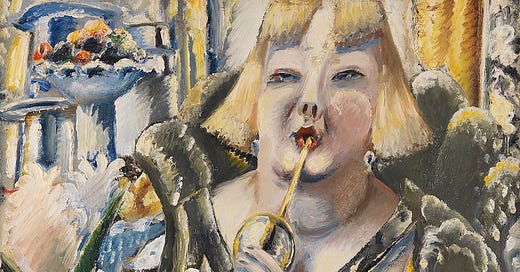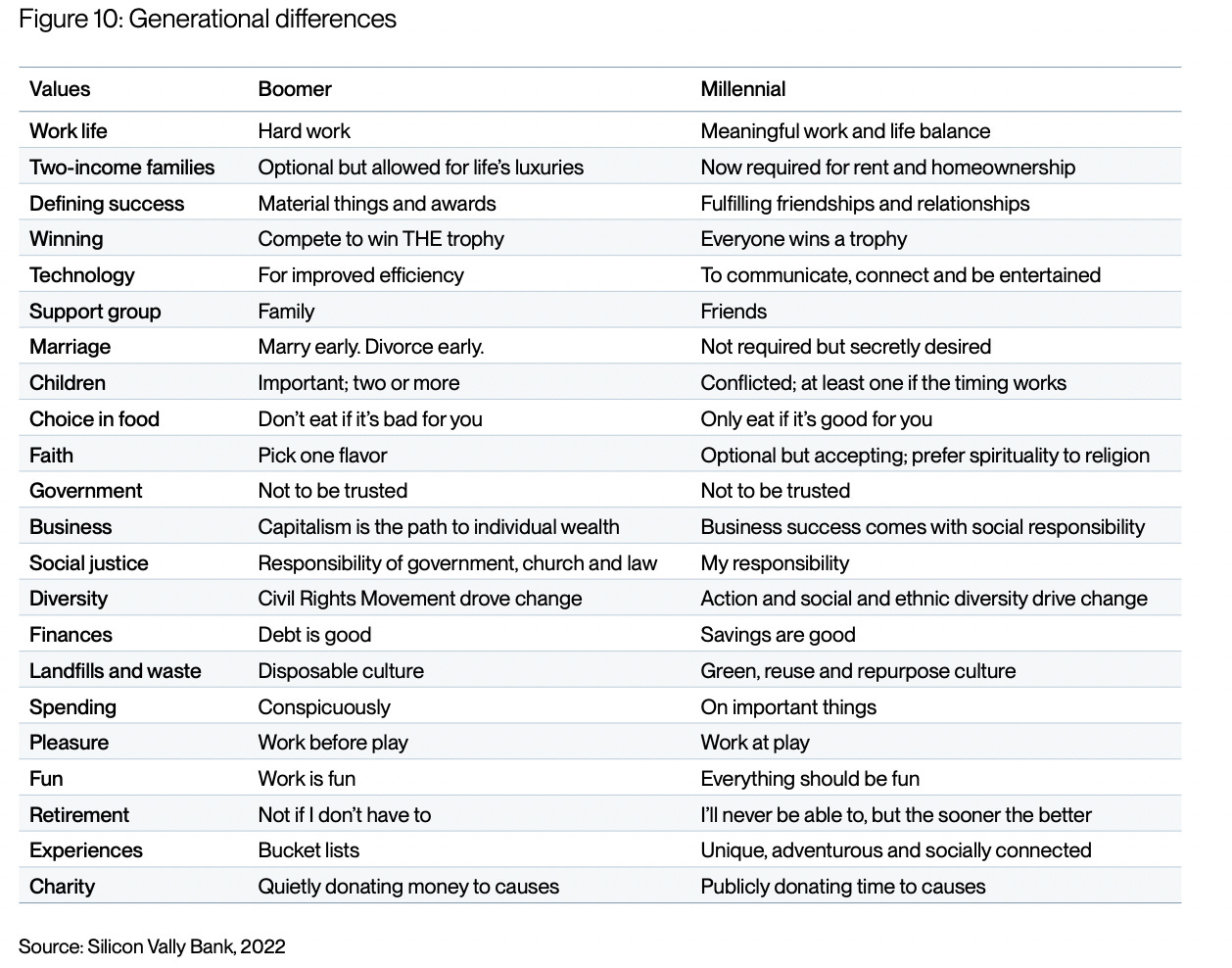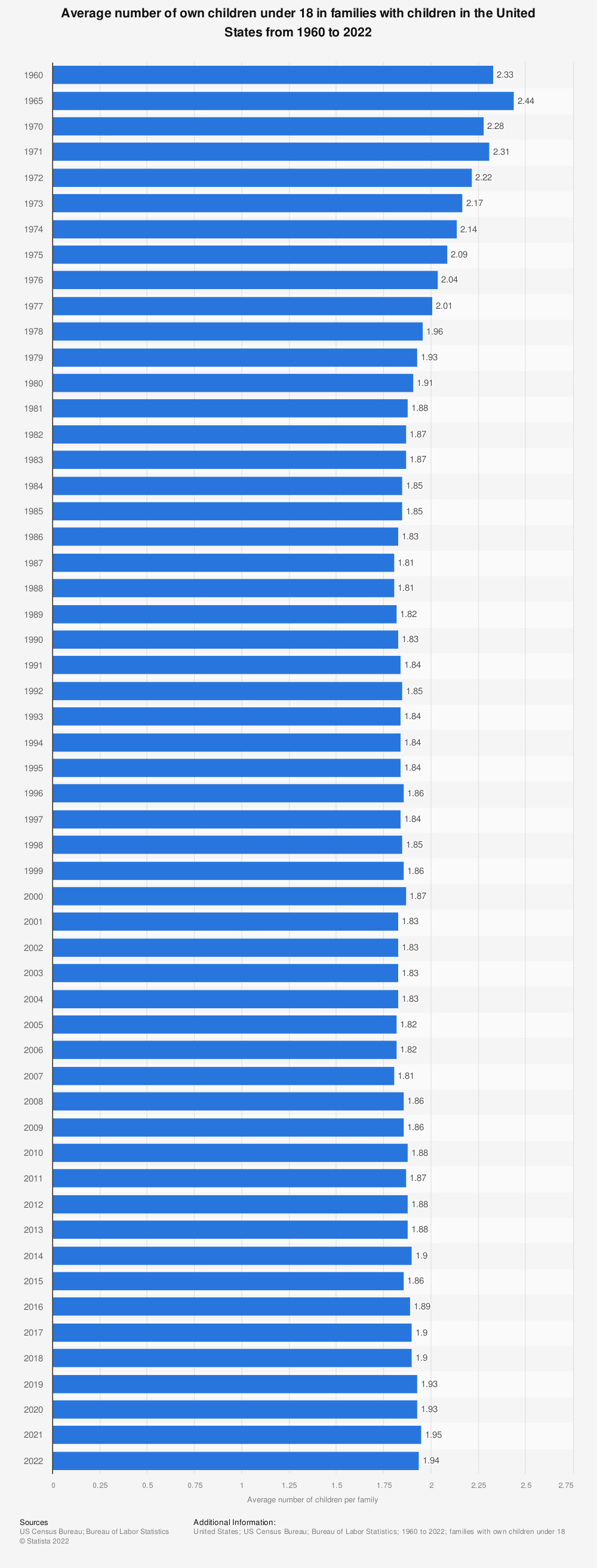Wine's Decline: Marketing Idiots or Something Else?
Thoughts on the new "State of the Industry" Report and the youngsters that hate wine
Wine is in a heap of trouble. But maybe it’s not because the industry is filled with marketing idiots.
A new, authoritative report shows that younger folks just aren’t as enthusiastic about wine as their parents were. That enthusiasm gap is showing up in sales of wine. For the second year in a row sales of wine have fallen. That hasn’t happened since 1993, 30 years ago. And it’s time, so says a report, that the wine industry do something about this problem. The thing is, I’m not convinced the wine industry is in a position to do much about the slide in wine drinking by the younger folk
The problem, according to the newly released Silicon Valley Bank State of the Wine Industry Report for 2023, is these darned kids and the wine industry’s inability to give’em what they want. So, they are turning to spirits. According to the Report:
“Consumers younger than 50 drink wine but more often drink across categories. But a sizable number of alcohol consumers under 50 fall into the category of consumers who imbibe but have chosen not to drink wine.
Take winery-to-consumer direct sales. According to the Report, in 2007 54% of all winery direct sales went to consumers under 50 years of age. Today that number is 44%. And keep in mind, those under 50 today include the huge Millennial generation. So, yeah, there’s a problem.
MONEY, MONEY, MONEY
Of course, the problem with wine is that the pretty good stuff is relatively expensive. You can get pretty damn good whiskey for $50 a bottle. It’ll last you a good long while. Or you can buy a $50 bottle of really good wine. That’ll last a couple of days at best, probably just one dinner at least. Would it be a surprise to anyone that Millennials are looking for value in their alcohol spending? It’s important to consider what the Millennial generation has gone through.
2000: The Internet Bubble Bursts
2008: Housing Crash and the Great Recession
2020: COVID and the economic crash
2021-2022: Historic Inflation
2023 and beyond: Who knows?
I list these things above to note that the kind of economic headwinds that Millennials (and GenX) have had to deal with are considerable and have significantly, along with other factors (I’m looking at you, housing market), shrunk the disposable income available to Millennials and younger to spend on things as disposable as wine.
So, what does the wine industry do?
Well, the recent Report reminds us that where advertising and promotion are concerned wine is spending only a tiny fraction of what spirits and beer, and “Ready-to-Drink” beverages are spending. And this is true. However, there has not been a time in the past 50 years when wine did not spend a fraction of what beer and spirits spent on advertising—even during wine’s boom years of the 80s, 90s, and 00s. And yet, they were the boom years.
It’s true that the wine industry and the demand side of the equation would be helped by a little multi-million dollar co-op advertising campaign. But this industry is made up primarily of small, family-owned wineries that allocate all their marketing dollars on tasting rooms and DTC sales while the few (50 or so) big wineries are loathed to foot the bill.
The recommendation of the State of the Industry Report is that the wine industry must shift the focus and tenor of its marketing and promotion to meet younger consumers where they are. As the report explains, “The key to future success in marketing to younger consumers is recognizing the things that are important to them as opposed to what’s worked in the past, then leveraging those values in marketing wine.”
UNDERSTANDING THE GENERATIONS
What’s important to younger consumers and how are they different than the boomers? The explanation is given in this handy chart:
I’ll be honest, I think a good deal of the comparison in attitudes listed above are way overblown and, more importantly, can’t possibly be the basis of a winery’s marketing and branding efforts. Take, for example, the category of “children” in which we learn that boomers placed more importance of children, wanting two or more of those little things. Meanwhile, we learn that Millennials aren’t really sure about children and will perhaps have one if everything falls into place. But consider this information:
While the number of children per family is not significantly different from the Boomers to the Millennials, the fact is that births per family are on the rise among the younger folks compared to Boomers.
But it’s more than the supposed family planning difference. Under the “fun” category we learn that Boomers believe “work should be fun” but for Millennials “Everything Should be fun.” Under “Spending” we learn that Boomers did so “conspicuously” while Millennials spend on “important” things. Really? Also, the notion that Millennials’ support groups are “friends” rather than family as assigned to Boomers misunderstands how Boomers cared for themselves as well as how Millennials currently do.
My point is this: Yes, let’s try to instill winery (also retail wine marketing) with messaging that connects with Millennials. But let’s also make sure that we aren’t relying on unreliable stereotypes of Millennials.
The Report puts it this way:
We are producing a consumer product, but we are also being true to a tradition that has spanned 8,000 years. That should say something to a consumer too. We can keep traditions and traditional labels, but we have to evolve and, as marketers have done for generations with other consumer goods, find the points of agreement where changing generations have common ground, and then get better at competing for market share. We can produce wines as we always have, but we need to reflect the values of younger consumers in our branding and messaging.
I think it is worth considering whether what will attract Millennials to wine is so different from what attracted Boomers to wine. It is worth considering whether it’s not so much the message the wine industry is sending but rather the way it is being sent. One of the most important differences between Boomer’s relationship with wine and wine education and the Millennials’ reception of wine’s message is how the message is sent. The way Millennials receive information today is almost entirely different from the Boomers’ means of receiving messages.
A MATTER OF CULTURE
All that said, one critical aspect of this question of how we move Millennials toward wine that is not being discussed is the role played by pop culture. Without three important pop culture events experienced by Boomers, I don’t think wine would have boomed as it did.
Paris Tasting of 1976: The fallout of American wines winning this tasting and, more important, the way the news spread over the culture through media promotion of the event can’t be underestimated as a key event in American wine history that move millions to reconsider American wines.
The French Paradox: In 1991 “60 Minutes” on CBS ran a segment on the so-called French Paradox—the phenomenon of the French having less heart disease than Americans despite them eating all that cheese and fat. The hypothesis was that the high per capita consumption of red wine among the French was the explanation for this paradox. The result of the widespread dissemination of the information in the “60 Minutes” broadcast was a huge and immediate increase in red wine consumption in the United States.
“Sideways”: The 2004 film depicted the writer/wine lover Miles and his trip to the Santa Ynez/Santa Barbara wine country in advance of his friend’s marriage. The film was nominated for numerous Oscars (winning Best Screenplay) as well as other awards. The film exposed wine and wine country to millions of Americans who responded by buying more Pinot Noir and tanking Merlot sales as the varietal was denigrated by the protagonist. It was a critical cultural moment for wine.
It’s not too much to say that without these three events, the wine boom of the 80s, 90s, and 00s would not have been the boom it was. As you think about that possibility, ask yourself, to what degree can pop culture impact American society today with the enhanced virality of social media and the internet and the extreme celebrity culture that currently exists? Try, for example, to imagine if Ed Sheeran, Taylor Swift, Christiano Renaldo, Beyoncé, Billie Eilish, or Megan Thee Stallion decided to make a big deal out of their love of wine, or produced entertainment around the virtues of wine, or starred in a film about a serious wine lover.
It might be that Millennials and GenZers are two cultural moments away from becoming generations of wine drinkers (and buyers).
I don’t believe wine is losing younger drinkers because it talks down to young consumers, is not welcoming to non-white audiences, is too eurocentric in its orientation or doesn’t speak the language of a younger generation. Many of these explanations are simply insulting to the very consumers they seek to explain.
Wine has a price problem. Younger generations have a socio-economic problem. Marketers have a message-delivery/technology problem. Younger consumers have not been exposed to wine in their natural, pop culture environment. The wine industry is incapable of addressing the sales deficit among younger drinkers with collaborative marketing efforts.
For anyone working in or around the Wine Industry, the new Silicon Valley Bank State of the Industry Report is required reading. It should spur discussion. It should set the table for an industry in decline to consider solutions.







The most rational explanation yet for the continued decline in wine consumption among younger generations. Totally aligns with my own experience as a mother (boomer generation) of Gen Y and Gen Z kids.